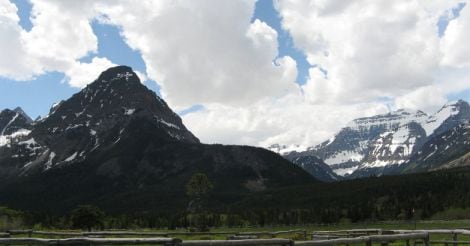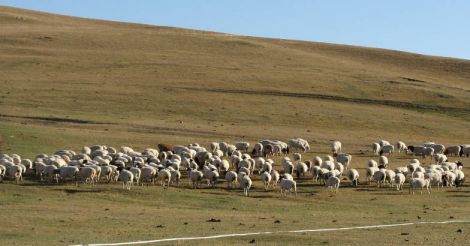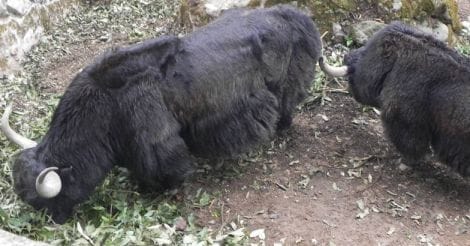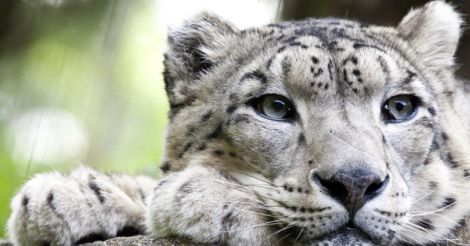One of the most majestic and elusive, high altitude wild predator belonging to the cat family is snow leopard (Panthera uncia (species) Schreber syn. Uncia uncia). The species is distributed across high mountain range areas of Central Asia (southern Russia, Mongolia, western China, Kazakhstan, Uzbekistan, Kyrgyzstan and Tajikistan) and South Asia (Afghanistan, Pakistan, Nepal, Bhutan and India). In India, the species has been reported from all the Himalayan states and ecosystems, namely Jammu and Kashmir, Himachal Pradesh, Uttarakhand, Darjeeling Himalayas (West Bengal), Sikkim and Arunachal Pradesh. It is found at high altitudes between 3,000-5,000 meters above sea level, and is known to inhabit alpine and sub-alpine ecosystems.
Also read: Call of the Wild | The spectacular beauty and biodiversity of North America
 Photo: Getty Images
Photo: Getty ImagesSnow leopard has earned the status of being ‘endangered’ in the IUCN Red List and it is estimated that only less than a few thousand are now left in the wild. It is one of the most data deficient member of the big cat species and hence, actual field estimates and population dynamics of snow leopard (countrywise) is currently unavailable. Estimates provided by different regional and international agencies are not quite reliable in that sense and is highly debatable, and can be only considered to be a rough estimate of the actual population available in different countries. Comprehensive field survey of the species for realistic estimation of the population dynamics is therefore absolutely important from successful conservation perspective. It is also important to note that there are several snow leopard captive breeding programs around the world, including India that has an impressive number of this rare cat bred and released in their wild habitats.
Also check: Call of the Wild | Rampant ivory trade: an elephantine problem
 Photo: Saikat Kumar Basu
Photo: Saikat Kumar BasuThe Padmaja Naidu Himalayan Zoological Park in Darjeeling, West Bengal is the only state of the art captive breeding center for snow leopards in India. The center has an impressive record for captive breeding of snow leopards in collaboration with other international snow leopard breeding program initiatives. However, it still needs more facilities, training, expertise and funding for carrying forward the snow leopard captive breeding program initiative. More concerted effort is necessary to establish snow leopard captive breeding programs in all the Himalayan states of India for making bigger success in breeding this high altitude cat species and releasing them in their wild natural habitat.
The species across the entire range of its distribution has been severely impacted by poaching as a rare trophy species and also for its exclusive skin pattern among trophy collectors around the world. The species has very high economic value in international under ground wildlife markets and is hence highly sought after by poachers and wildlife traffickers in Central and South Asia. Currently, two to three major sub species are reported by different researchers across Central and South Asia, and is believed to be almost hunted towards extinction in Russia, China, Central Asian states and Pakistan.
 Photo: Saikat Kumar Basu
Photo: Saikat Kumar BasuIsolated cases of poisoning, trapping and shooting of snow leopards in the Ladakh region of Jammu and Kashmir, and northern districts of Himachal Pradesh by cattlemen and livestock handlers to protect their domestic animals in remote rural areas have also been reported. Much of the snow leopard habitat across the high Himalayas is vastly unknown and grossly under reported. No comprehensive and reliable data across the vast distribution range is predominantly unknown to conservation scientist and researchers as well as to local, regional and international nature and wildlife survey agencies.
 Photo: Saikat Kumar Basu
Photo: Saikat Kumar BasuThe species has also been impacted by climate change, lack of suitable prey species due to regular poaching of herbivores by local tribal communities sharing the habitat with the species, habitat degradation and habitat fragmentation in the countries covering its range of distribution. A recent report suggested higher populations of snow leopards in the remote northern and central mountainous parts of Afghanistan. The magic may have been due to the fact they inhabit sparsely populated, inaccessible mountain ranges free from any possible anthropogenic impacts in this war torn nation. Similar report of small concentration of the species has also been reported in inaccessible parts of Russia, Mongolia and other Central Asian states (Kazakhstan, Uzbekistan, Kyrgyzstan and Tajikistan) from time to time.
 Photo: Saikat Kumar Basu
Photo: Saikat Kumar BasuUnless serious conservation efforts are directed for the protection of this majestic species, the future of snow leopards appears to be extremely challenging. Grazing domestic cattle in the lower reaches of snow leopard habitats and lack of suitable herbivore prey species have been bringing this majestic species in direct confrontation with animal herders in rural areas causing death and killings on either side, being more skewed towards loss of precious snow leopards across all her major habitats.
 Photo: Saikat Kumar Basu
Photo: Saikat Kumar BasuIt is important to include the remote rural villages, cattle herders and grazers in high altitude human settlements to be respectful towards their wild surroundings; and become stakeholders in the conservation of local snow leopards. Adequate compensation for cattle killed or attacked by snow leopards could provide an economic incentive in conserving snow leopard by protecting them from the bullets of remote, rural, farming and grazing communities where they co-inhabit within the same ecosystem.
(The author is a Canada and India based freelance journalist specializing in global geo-political, strategic and foreign policy issues, science & technology and environment & conservation related themes.)
Read more: Call of the Wild | The spectacular beauty and biodiversity of North America

























 Photo: Getty Images
Photo: Getty Images